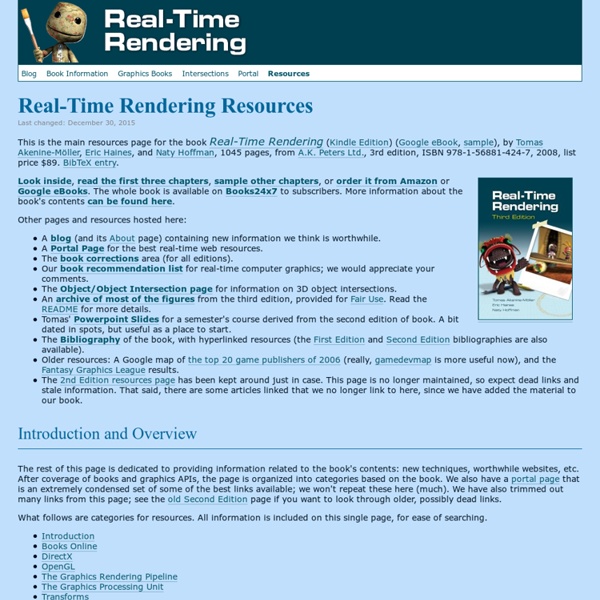



Sky & Atmosphere subsections: Clouds , Fog, Rain, and Lighting Sky Color A common approach is to model a dome, and either apply a texture map or use vertex colors to provide the impression of a sky. a can be extremely realistic looking, but has drawbacks: difficult to make it change with time of day if it contains pictures of clouds, they must be very distant clouds, otherwise as the viewer moves around a landscape, they would notice the same clouds staying overhead in general, daytime sky color is a gradual fade from "horizon color" to "zenith color" overhead {*style:<b> </b>*} for example, a clear blue sky usually goes from a light cyan at the horizon to a rich medium-blue at dusk and dawn, there is an additional fade of warm color from a broad stretch of the east/west horizon to the zenith, as shown in the photograph to the right by choosing an attractive set of colors, you can just interpolate between them for all times of day and night Sky Domes Tutorial at the game developer site Flipcode Some academic work
Computer Graphics Data A 3D model of the real Lawrence Berkeley National Laboratory building 90 3rd floor conference room originally created by Anat Grynberg and Greg Ward, circa 1991. The model was created from manual measurements with coordinates directly typed into a text editor. It is commonly used for global illumination experiments. This model was flipped inside-out at some point in history and appears backwards in some papers relative to the original, with the EXIT signs reading as if in a mirror. Additional resources: Original in RADIANCE format by Anat Grynberg and Greg Ward Model in MGF format, converted by Greg Ward Rendering and actual photograph comparison
Your beautiful eyes on Photography Served Behance Served Sites Served is a collection of sites that showcase category specific content from Behance, the world's leading platform for creative professionals across all industries. View All Served Sites → photography Served Join Behance Hire a Designer Behance Project Shuffle Showcase & Discover Creative Work Sign up for free View Next Project → Shuffle <img class="featured-ribbon-2x featured-ribbon featured-ribbon-net" src=" title="Photography Served"></img> Project Featured On: Photography Served — 6/6/10 Your beautiful eyes Info Statistics Created: 2/20/10 Last Edited: 7/26/15 Description Extreme close of eyes, with all their relief. Project Info Owners Suren Manvelyan Tags Copyright Info Attribution Non-commercialNo Derivatives Read More Share inShare Short link: by Yerevan, Armenia Follow on Bēhance Eye with coloboma.Visit my facebook page to find more photos: Save Project
Shape Benchmark 3D Models The benchmark contains a database of 3D polygonal models collected from the World Wide Web. For each 3D model, there is an Object File Format (.off) file with the polygonal geometry of the model, a model information file (e.g., the URL from where it came), and a JPEG image file with a thumbnail view of the model. Version 1 of the benchmark contains 1,814 models. Training and Test Databases The benchmark set of models has been split into a training database and a test database. Classifications In order to enable evaluation of retrieval and classification algorithms, the benchmark includes a simple mechanism to specify partitions of the 3D models into classes. We expect that many possible classifications are possible for a given database of 3D models. Software We provide free source code to help you parse and work with the benchmark files. Downloads Smaller subsets of the full model database, each less than 40MB Citation In citing the Princeton Shape Benchmark, please refer to: Feedback
Mesh Set [Brown Games Home] The Brown Mesh Set is a library of 3D models downloaded from the internet. It is useful for testing the robustness of graphics algorithms and making generalizations about the models used in practice. The models are raw meshes with no animation or texture data that are stored in an easy-to-use indexed face set format (IFS). The models include those traditionally used in SIGGRAPH papers, Quake MD2 models, geometric primitives, military vehicles, toys, and every-day objects. @article{McGuire04, author = "Morgan McGuire", title = "Observations on Silhouette Sizes", journal = "journal of graphics, gpu, and game tools", volume = "9", number = "1", pages = "1-12", year = "2004", } For more models, see the Princeton Shape Benchmark, a repository of 3D models and software tools for evaluating shape-based retrieval and analysis algorithms.
Lincoln 3D Scans | The Collection, Lincoln & Oliver Laric